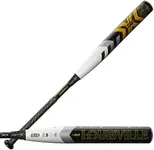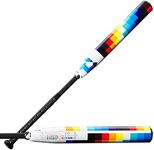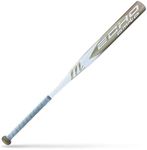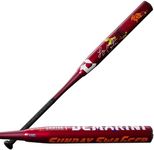We Use CookiesWe use cookies to enhance the security, performance,
functionality and for analytical and promotional activities. By continuing to browse this site you
are agreeing to our privacy policy
Best Softball Bats
From leading brands and best sellers available on the web.#2

Louisville Slugger
Louisville Slugger 2024 Meta (-10) Fastpitch Bat - 34"/24 oz
View Product
#3

DeMarini
DeMarini Prism+™ (-11) Fastpitch Softball Bat - 32'/21 oz, White/Multi
View Product
#4

Louisville Slugger
Louisville Slugger 2024 LXT (-11) Fastpitch Bat - 33"/22 oz
View Product
#5

Louisville Slugger
Louisville Slugger Proven (-13) Fastpitch Bat
View Product
#6

Worth
Worth | Bedlam Slowpitch Softball Bat | Phil Matte Model | USSSA | XL Load - 12.5" Barrel | 34" x 26oz.
View Product
#7

Easton
Easton | REBEL Slowpitch Softball Bat | All-Association | Loaded | 12" Barrel | 33" x26 oz.
View Product
#8

DeMarini
DeMarini 2024 Lady SNI Slowpitch Bat - 34"/27.5 oz
View Product
#9

DeMarini
DeMarini 2022 Steel Slowpitch Softball Bat - 28 oz
View Product
#10

Easton
YSB22HAV10 Havoc 28/18 2 1/4-10
View Product
Buying Guide for the Best Softball Bats
Choosing the right softball bat can make a big difference in your performance and enjoyment of the game. The best bat for you will depend on your age, skill level, league requirements, and personal preferences. It's important to understand the key features of a bat so you can match them to your needs and playing style. By focusing on the main specifications, you can narrow down your options and find a bat that feels comfortable and helps you play your best.LengthThe length of a softball bat is measured from the knob to the end cap and is usually given in inches. This spec is important because it affects your reach and swing mechanics. Shorter bats are easier to control and are often better for younger or smaller players, while longer bats provide more reach and can help cover more of the plate. Generally, youth players use bats between 26 and 30 inches, while adult players might use bats from 30 to 34 inches. To pick the right length, consider your height, arm length, and comfort when swinging. A good rule of thumb is to try swinging different lengths to see which feels most natural and allows you to swing quickly and confidently.
WeightBat weight is usually measured in ounces and is crucial for swing speed and control. Lighter bats are easier to swing faster, which can help with making contact, especially for younger or less experienced players. Heavier bats can provide more power if you have the strength to swing them effectively. The right weight depends on your strength, skill level, and hitting style. If you find your swing slowing down or you struggle to control the bat, you might need a lighter option. If you can swing a heavier bat without losing speed, you may benefit from the extra power.
Drop WeightDrop weight is the difference between the length (in inches) and the weight (in ounces) of the bat, usually shown as a negative number (for example, -10). This spec is important because it helps you compare the relative heaviness of bats of different lengths. A higher drop weight (like -12) means a lighter bat, while a lower drop weight (like -8) means a heavier bat. Younger or smaller players often prefer higher drop weights for easier swinging, while stronger or more advanced players might choose lower drop weights for more power. Consider your strength and comfort when choosing the drop weight.
MaterialSoftball bats are commonly made from aluminum, composite, or wood. Aluminum bats are durable, lightweight, and often provide a good balance of power and control, making them popular for many players. Composite bats are made from layered materials and can offer a larger sweet spot and reduced vibration, but they may require a break-in period. Wood bats are less common in softball but are sometimes used for training or in specific leagues. Your choice of material should be guided by league rules, your preference for feel and performance, and how much maintenance you're willing to do.
Barrel DiameterThe barrel diameter is the width of the thickest part of the bat and is usually measured in inches. Most adult softball bats have a barrel diameter of 2 1/4 inches, which is often required by league rules. A larger barrel can provide a bigger sweet spot, making it easier to hit the ball well, while a smaller barrel can be lighter and easier to control. Always check your league's regulations, and if you have a choice, consider what feels best when you swing.
CertificationMany leagues require bats to meet certain standards and have specific certifications, such as ASA, USSSA, or NSA. This spec is important because using a non-certified bat can make you ineligible to play or result in penalties. Certifications ensure the bat meets safety and performance standards for your league. Always check your league's rules before buying a bat and look for the appropriate certification stamp on the bat.
GripThe grip refers to the handle covering and its thickness or texture. A good grip can help you hold the bat securely and reduce vibration or sting when you hit the ball. Some players prefer a thicker, cushioned grip for comfort, while others like a thinner grip for better feel and control. Try different grip styles to see what feels best in your hands, especially if you tend to get blisters or want extra shock absorption.








